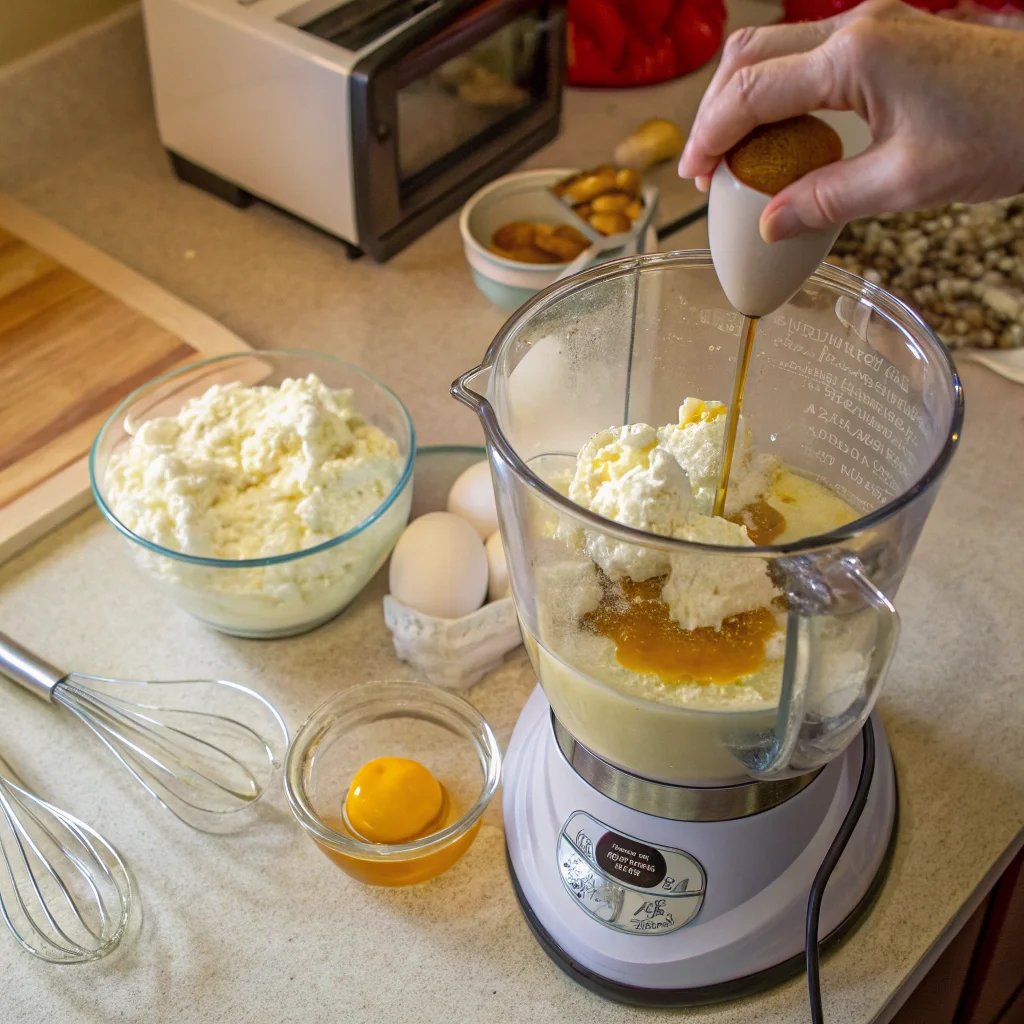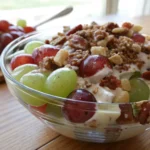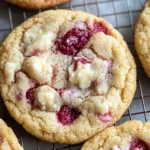Introduction to Healthy Cheesecake Recipe
Cheesecake is a timeless dessert loved by many for its creamy texture and rich flavor. However, indulgence often comes with high calories, sugar, and fats, leaving health-conscious individuals searching for alternatives. Thankfully, a healthy cheesecake recipe can provide the same satisfaction while keeping nutritional goals in check. This guide explores the ingredients, preparation, and variations for crafting a cheesecake that is both delicious and guilt-free. By the end, you’ll be equipped to create a dessert that aligns with your health goals without sacrificing taste.
Table of Contents
Why Choose a Healthy Cheesecake Recipe?
The Appeal of Cheesecake
Cheesecake has stood the test of time, celebrated for its versatility and creamy decadence.
- Traditional recipes rely heavily on cream cheese, sugar, and heavy cream, contributing to their high-calorie content.
- Whether plain or flavored, cheesecake offers countless customization options, making it a universal favorite.
Yet, these classic versions often contain excessive fats and sugars. A healthy cheesecake recipe provides an appealing alternative for those aiming to indulge responsibly without compromising the dessert’s beloved texture and taste.
Similarly, desserts like brookies can also be modified for a healthier approach
Benefits of a Healthy Cheesecake
Choosing a healthier cheesecake comes with several advantages:
- Lower Calorie Content: Substituting traditional ingredients like cream cheese with low-fat cottage cheese or Greek yogurt significantly reduces calorie intake.
- Higher Nutritional Value: Including protein-rich components ensures the dessert supports muscle repair and satiety.
- Diet-Friendly: Adaptations make it suitable for various diets, such as keto, gluten-free, or low-sugar regimens.
Transitioning to a healthier option doesn’t mean giving up on flavor. Using nutrient-dense ingredients often enhances the overall taste.
For those who enjoy combining flavors, this Best Brookie Recipe demonstrates the creative potential of desserts.
Key Ingredients for a Healthy Cheesecake Recipe
Cottage Cheese and Greek Yogurt: The Protein Heroes
Cottage cheese and Greek yogurt serve as the backbone of a healthy cheesecake recipe.
- Cottage Cheese:
- Packed with protein, it helps achieve a creamy texture without the heaviness of cream cheese.
- Low-fat options work excellently, maintaining flavor and texture while reducing fats.
- Greek Yogurt:
- Its natural tang complements the sweetness of the dessert.
- Non-fat or low-fat varieties can cater to specific dietary goals.
These ingredients not only lighten the cheesecake but also boost its nutritional profile, making every bite wholesome.
Sweeteners and Substitutes
Sweeteners are essential to balancing flavors in any cheesecake. Instead of refined sugar:
- Use natural sweeteners like honey, maple syrup, or agave nectar for subtle, wholesome sweetness.
- Zero-calorie options like stevia or monk fruit are perfect for calorie-conscious bakers.
- Keep in mind, that adjusting the quantity is key to avoiding overpowering flavors.
Flour and Starch Options
Flour and starch act as binders, ensuring the filling sets properly.
- Cornstarch: A popular choice for those avoiding gluten.
- Almond or Coconut Flour: Ideal for keto and low-carb recipes, these options also add a nutty flavor.
- Always sift your dry ingredients for a smooth filling texture.
Other Essential Ingredients
Other crucial components for a healthy cheesecake recipe include:
- Eggs: Provide structure and richness to the filling.
- Lemon Zest: Adds freshness and enhances flavors.
- Vanilla Extract: Deepens the flavor profile for a classic cheesecake taste.
How to Make a Healthy Cheesecake Recipe Step-by-Step
Crafting a healthy cheesecake recipe requires attention to detail, but the process is simple and rewarding. Follow these steps for a flawless, creamy, and nutrient-packed dessert.
Preparing the Crust
The crust provides a solid foundation for your cheesecake. While graham crackers are traditional, healthier alternatives like almond or oat flour can elevate its nutritional value.
Ingredients:
- 1 ½ cups crushed graham crackers (or almond flour for a gluten-free option)
- 3 tablespoons unsalted butter (or coconut oil for a dairy-free crust)
- 1 tablespoon natural sweetener, such as honey or maple syrup
Steps:
- Crush the Base: Pulse the graham crackers or oats in a food processor until finely ground. For almond or coconut flour, no processing is needed.
- Combine Ingredients: Mix the crumbs, melted butter, and sweetener until evenly combined. The mixture should resemble wet sand.
- Form the Crust: Press the mixture into the bottom of a greased springform pan, ensuring an even layer. Use the back of a spoon or a flat-bottomed glass for a smooth surface.
- Bake to Set: Preheat the oven to 350°F (175°C) and bake the crust for 8-10 minutes. This step ensures a firm base that holds the filling without becoming soggy. Allow the crust to cool before adding the filling.
Making the Cheesecake Filling
The filling is the heart of your cheesecake. Achieving the perfect consistency requires blending ingredients thoroughly while avoiding overmixing.

Ingredients:
- 2 cups cottage cheese (low-fat or full-fat, based on preference)
- 1 cup Greek yogurt (plain, unsweetened)
- 2 large eggs
- 1/3 cup natural sweetener (honey, stevia, or monk fruit)
- 2 tablespoons cornstarch or almond flour (as a binding agent)
- 1 teaspoon vanilla extract
- 1 teaspoon lemon zest
Steps:
- Blend Ingredients: Combine cottage cheese, Greek yogurt, eggs, sweetener, vanilla extract, and lemon zest in a blender or food processor. Blend until smooth and creamy.
- Tip: Use a high-powered blender for the silkiest texture. If you don’t have one, strain the mixture to remove lumps.
- Incorporate the Binder: Add cornstarch or almond flour to stabilize the filling. Blend again briefly to mix evenly.
- Check for Sweetness: Taste the mixture and adjust sweetness or flavorings as needed.
Pouring and Preparing
- Layer the Filling: Pour the blended mixture onto the cooled crust. Use a spatula to spread it evenly. Tap the pan gently on the counter to release air bubbles.
- Optional Swirls: For added flair, drizzle fruit puree, melted chocolate, or nut butter over the filling. Use a skewer to create beautiful swirls.
Baking Tips
Proper baking is essential for achieving the creamy, dense texture characteristic of cheesecake.
- Preheat the Oven: Set the oven to 325°F (163°C) to prevent overbaking.
- Create a Moist Environment: Place a pan of water on the lower rack of the oven. The steam helps prevent cracking by maintaining a consistent temperature.
- Bake with Patience: Bake for 45-55 minutes, depending on the thickness of the cheesecake. The edges should be set, while the center remains slightly jiggly.
- Tip: Avoid opening the oven door during baking to maintain an even temperature.
- Cooling Phase: Turn off the oven and leave the cheesecake inside for an additional 30 minutes. Gradual cooling minimizes cracking.
- Refrigerate: After the cheesecake reaches room temperature, cover it with plastic wrap or aluminum foil and refrigerate for at least 4 hours, preferably overnight. This step enhances flavor and firmness.
Serving
Once chilled, carefully remove the cheesecake from the springform pan. Use a warm knife to slice for clean cuts. Garnish with fresh fruit, a dollop of Greek yogurt, or a sprinkle of granola for added texture.
By following these detailed steps, you’ll create a healthy cheesecake recipe that’s not only visually appealing but also deliciously satisfying.
Common Mistakes to Avoid When Making a Healthy Cheesecake
- Skipping the Cooling Phase
- Always allow the cheesecake to cool gradually to avoid cracks.
- Overmixing the Batter
- Overmixing introduces air, causing the filling to rise unevenly and crack.
- Ignoring Ingredient Substitutions
- Not all substitutions work seamlessly; stick to tried-and-true alternatives.
Serving and Storing Your Healthy Cheesecake
Presentation Ideas
- Garnish with fresh fruit, granola, or a drizzle of dark chocolate. A drizzle of homemade strawberry jam, like this Ultimate Strawberry Jam Recipe, pairs perfectly with cheesecake
- Serve with a side of Greek yogurt or a berry compote for added flair.
Storage Tips
- Refrigerate in an airtight container for up to a week.
- Avoid freezing as it can compromise texture.
FAQs About Healthy Cheesecake: Everything You Need to Know
What is a healthy substitute for cream cheese in cheesecake?
A healthy substitute for cream cheese in cheesecake is cottage cheese or Greek yogurt. Cottage cheese offers a high-protein, low-fat alternative while maintaining a creamy texture. Greek yogurt adds a tangy flavor and is rich in nutrients like calcium and probiotics. Both options can be blended to achieve a smooth consistency similar to cream cheese, making them excellent choices for a healthy cheesecake recipe.
Are cheesecakes healthy?
Cheesecakes can be made healthy by swapping traditional high-fat and high-sugar ingredients with lighter alternatives. Using low-fat cottage cheese, Greek yogurt, or natural sweeteners like honey or stevia significantly reduces calorie and sugar content. While traditional cheesecakes are calorie-dense, a healthy cheesecake recipe offers a nutritious dessert option packed with protein and lower in unhealthy fats.
Can I use yogurt instead of cream cheese for cheesecake?
Yes, you can use yogurt instead of cream cheese in a cheesecake recipe. Greek yogurt, in particular, is a popular choice due to its thick texture and tangy taste. When combined with ingredients like eggs and a binding agent, Greek yogurt provides a smooth and creamy filling. This substitution not only lowers the calorie count but also boosts the cheesecake’s protein content.
Is cheesecake healthier than regular cake?
Cheesecake can be healthier than regular cake, depending on the ingredients used. While traditional cheesecake often contains more fat due to cream cheese, a healthy cheesecake recipe made with lighter ingredients can be a better option. Regular cakes usually rely on refined flour and sugar, which may lack nutritional benefits. By incorporating nutrient-rich alternatives, cheesecake can serve as a protein-packed dessert with less processed sugar.
Can I eat cheesecake and still lose weight?
Yes, you can enjoy cheesecake and still lose weight if you choose a healthy cheesecake recipe and practice portion control. Substituting high-calorie ingredients with low-fat options like cottage cheese and using natural sweeteners can reduce the calorie count significantly. Pairing this dessert with a balanced diet and regular exercise ensures it fits within your daily caloric intake while satisfying your cravings.
What is the healthiest cake to eat?
The healthiest cake to eat often depends on its ingredients. Cakes made with whole-grain flours, natural sweeteners, and nutrient-dense additions like fruits or nuts are excellent choices. Cheesecake made with Greek yogurt or cottage cheese ranks high for its protein content and creamy texture. Additionally, options like flourless almond cakes or vegan carrot cakes are popular for their health benefits and delicious flavors.
Conclusion: Enjoy Guilt-Free Cheesecake Anytime
A healthy cheesecake recipe is a perfect way to enjoy a decadent dessert without compromising on health. By using nutritious ingredients like cottage cheese and Greek yogurt, along with mindful preparation techniques, you can create a dessert that satisfies your cravings while aligning with dietary goals. Whether you prefer a classic flavor or adventurous variations, this recipe adapts easily to suit your needs. Try it today and indulge guilt-free!






